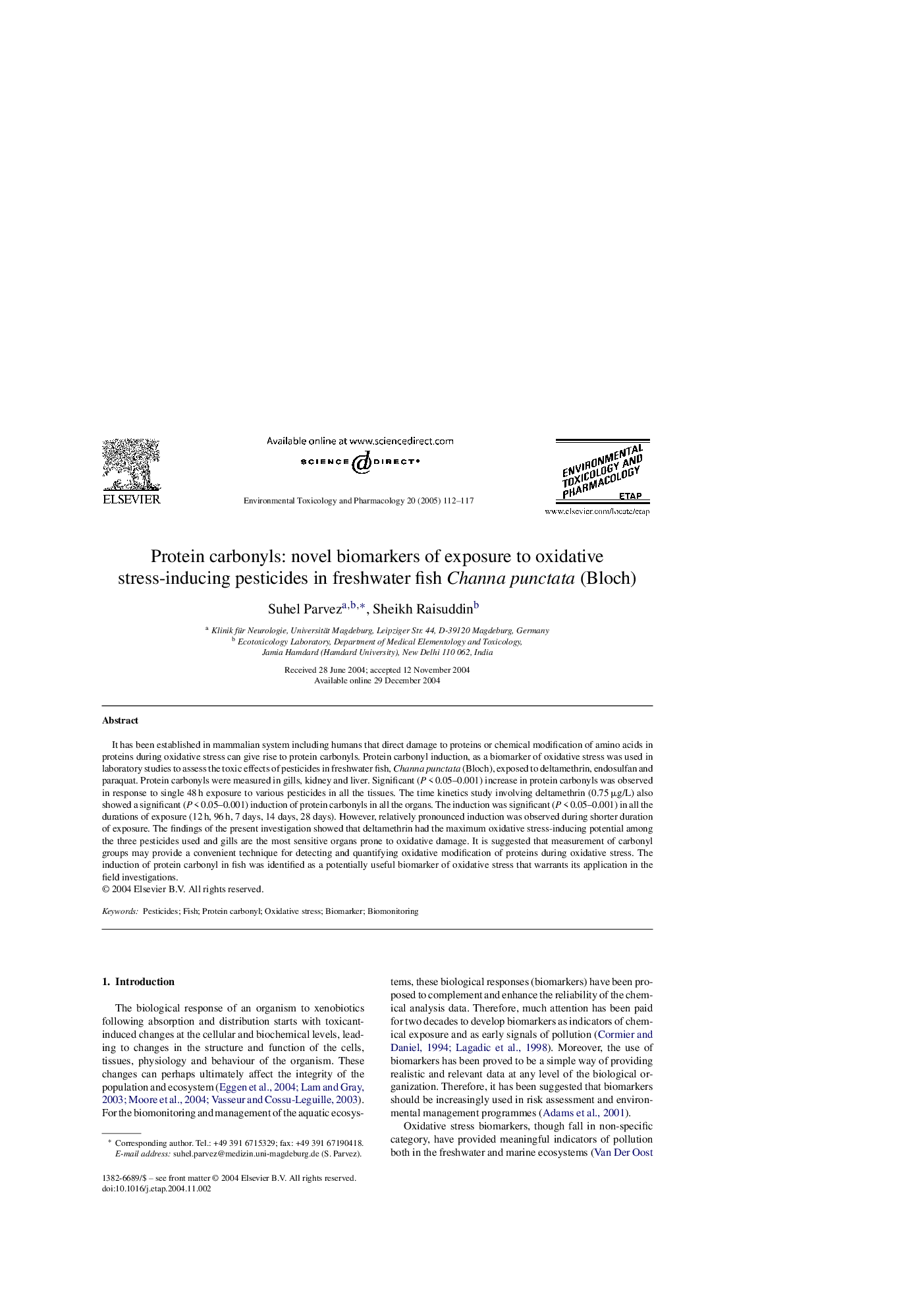| Article ID | Journal | Published Year | Pages | File Type |
|---|---|---|---|---|
| 9030213 | Environmental Toxicology and Pharmacology | 2005 | 6 Pages |
Abstract
It has been established in mammalian system including humans that direct damage to proteins or chemical modification of amino acids in proteins during oxidative stress can give rise to protein carbonyls. Protein carbonyl induction, as a biomarker of oxidative stress was used in laboratory studies to assess the toxic effects of pesticides in freshwater fish, Channa punctata (Bloch), exposed to deltamethrin, endosulfan and paraquat. Protein carbonyls were measured in gills, kidney and liver. Significant (P < 0.05-0.001) increase in protein carbonyls was observed in response to single 48 h exposure to various pesticides in all the tissues. The time kinetics study involving deltamethrin (0.75 μg/L) also showed a significant (P < 0.05-0.001) induction of protein carbonyls in all the organs. The induction was significant (P < 0.05-0.001) in all the durations of exposure (12 h, 96 h, 7 days, 14 days, 28 days). However, relatively pronounced induction was observed during shorter duration of exposure. The findings of the present investigation showed that deltamethrin had the maximum oxidative stress-inducing potential among the three pesticides used and gills are the most sensitive organs prone to oxidative damage. It is suggested that measurement of carbonyl groups may provide a convenient technique for detecting and quantifying oxidative modification of proteins during oxidative stress. The induction of protein carbonyl in fish was identified as a potentially useful biomarker of oxidative stress that warrants its application in the field investigations.
Related Topics
Life Sciences
Environmental Science
Health, Toxicology and Mutagenesis
Authors
Suhel Parvez, Sheikh Raisuddin,
